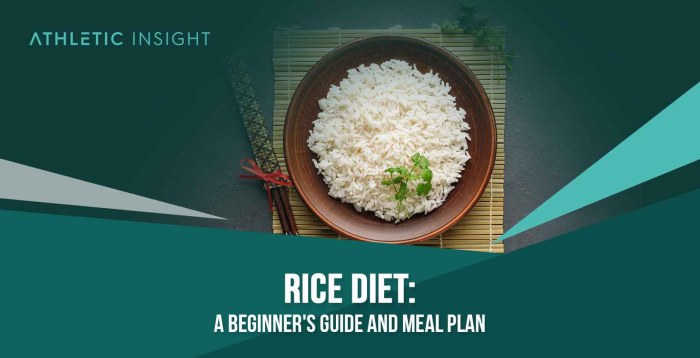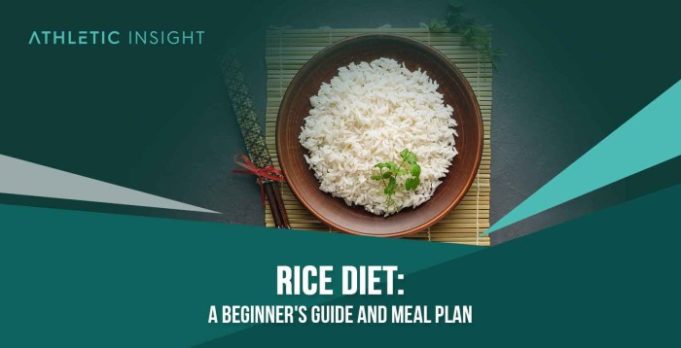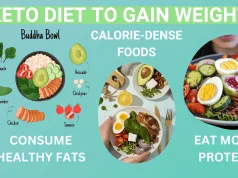How to diet with rice? It’s a question that many people ask, seeking a balanced and sustainable approach to weight management. Rice, a staple food in countless cultures, can be a versatile and nutritious ingredient when incorporated into a healthy diet. Understanding the nutritional profile of rice, its glycemic index, and its calorie density are crucial steps in navigating its role in your weight loss journey. This guide explores the various aspects of incorporating rice into a healthy diet, providing practical tips and strategies for successful weight management.
From choosing the right type of rice to incorporating it into delicious and satisfying meals, we’ll delve into the nuances of rice consumption and its impact on your overall health. We’ll also discuss popular rice-based diets, their potential benefits and drawbacks, and provide insights into the cultural significance of rice around the world. Join us as we embark on a journey to uncover the secrets of how to diet with rice effectively.
Understanding Rice in a Diet

Rice is a staple food for billions of people worldwide, and it can play a role in a healthy diet. Understanding its nutritional profile and how different types of rice affect blood sugar levels is crucial for incorporating it into your meal plan effectively.
Nutritional Profile of Rice
Rice is primarily a source of carbohydrates, providing energy to the body. It also contains fiber, vitamins, and minerals, although the amounts vary depending on the type of rice.
- Carbohydrates: Rice is primarily composed of carbohydrates, which are the body’s primary source of energy. The carbohydrate content can range from 28 grams to 45 grams per cooked cup, depending on the type of rice.
- Fiber: Brown rice, wild rice, and other whole-grain varieties contain more fiber than white rice. Fiber promotes digestive health, helps regulate blood sugar levels, and contributes to a feeling of fullness.
- Vitamins and Minerals: Rice is a source of several essential vitamins and minerals, including thiamin, niacin, iron, and magnesium. Brown rice and wild rice are generally richer in these nutrients compared to white rice.
Glycemic Index of Different Rice Types
The glycemic index (GI) measures how quickly a food raises blood sugar levels after consumption. Different types of rice have varying GI values.
- White Rice: White rice has a high GI, meaning it can cause a rapid spike in blood sugar levels. This is because the refining process removes the bran and germ, which contain fiber that slows down digestion.
- Brown Rice: Brown rice has a lower GI than white rice due to its higher fiber content. This helps to slow down the absorption of sugar into the bloodstream, resulting in a more gradual rise in blood sugar levels.
- Wild Rice: Wild rice has the lowest GI among the common rice varieties. It is a whole grain with a high fiber content, which further contributes to its slow-digesting nature.
Calorie Density of Rice
Rice is a relatively calorie-dense food, meaning it contains a significant amount of calories per serving. The calorie content can vary depending on the type of rice and the cooking method.
- White Rice: One cup of cooked white rice contains approximately 200 calories.
- Brown Rice: One cup of cooked brown rice contains approximately 210 calories.
- Wild Rice: One cup of cooked wild rice contains approximately 170 calories.
For comparison, one cup of cooked pasta contains around 200 calories, while one cup of cooked quinoa contains approximately 220 calories.
Incorporating Rice into a Healthy Diet
Rice can be a nutritious and versatile addition to a balanced diet. While often considered a high-carbohydrate food, rice offers various nutritional benefits, including essential vitamins, minerals, and fiber. To incorporate rice into a healthy diet, focus on choosing whole grain varieties, pairing it with lean protein and vegetables, and preparing it in ways that minimize calorie intake.
Examples of Healthy Rice-Based Meals
Rice can be a delicious and satisfying base for numerous healthy meals. Here are a few examples:
- Brown rice stir-fry with tofu and vegetables: This dish combines brown rice, tofu, and an array of colorful vegetables, like broccoli, carrots, and bell peppers. The tofu provides protein, while the vegetables offer essential vitamins and minerals. A light sauce made with soy sauce, ginger, and garlic adds flavor and depth.
- Black bean and sweet potato rice bowls: This bowl features black beans for protein and fiber, sweet potatoes for complex carbohydrates, and a medley of fresh vegetables. The rice provides a satisfying base for the flavorful toppings.
- Salmon with quinoa and roasted vegetables: Quinoa, a seed similar to rice in texture and nutritional profile, is a good alternative to white rice. This meal combines grilled salmon, quinoa, and roasted vegetables like asparagus, zucchini, and bell peppers. The salmon provides healthy fats and protein, while the quinoa and vegetables offer complex carbohydrates and fiber.
Sample Weekly Meal Plan
This sample weekly meal plan incorporates rice as a staple food, ensuring balanced macronutrients and diverse food choices.
| Day | Breakfast | Lunch | Dinner |
|---|---|---|---|
| Monday | Oatmeal with berries and nuts | Brown rice salad with grilled chicken and mixed greens | Black bean and sweet potato rice bowls with avocado |
| Tuesday | Greek yogurt with fruit and granola | Leftover black bean and sweet potato rice bowls | Lentil soup with whole-wheat bread |
| Wednesday | Scrambled eggs with whole-wheat toast | Brown rice with tofu and vegetables | Chicken stir-fry with brown rice |
| Thursday | Smoothie with fruit, yogurt, and spinach | Leftover chicken stir-fry | Salmon with quinoa and roasted vegetables |
| Friday | Avocado toast with eggs | Tuna salad sandwich on whole-wheat bread | Vegetarian chili with brown rice |
| Saturday | Breakfast burrito with eggs, beans, and vegetables | Leftover vegetarian chili | Pizza with whole-wheat crust, vegetables, and lean protein |
| Sunday | Pancakes with fruit and syrup | Leftover pizza | Roast chicken with roasted vegetables and brown rice |
Tips for Preparing Rice
Here are some tips for preparing rice in a way that minimizes calorie intake and maximizes nutritional value:
- Choose whole grain varieties: Whole grain rice, such as brown rice, wild rice, and black rice, is a healthier choice than white rice. Whole grains are rich in fiber, which promotes satiety and helps regulate blood sugar levels.
- Cook rice in a rice cooker: Rice cookers are designed to cook rice perfectly and prevent overcooking, which can lead to starch breakdown and increased calorie content.
- Avoid adding excessive oil or butter: Rice can be cooked without adding any oil or butter, or you can use a small amount of healthy fats like olive oil or avocado oil.
- Experiment with different cooking methods: Rice can be cooked in a variety of ways, including steaming, pressure cooking, and baking. These methods can help reduce calorie intake and preserve nutrients.
Rice Diet Variations
Rice-based diets have gained popularity as a weight loss strategy, promising quick results and a simple approach to healthy eating. However, it’s crucial to understand the different types of rice diets, their potential benefits and drawbacks, and their suitability for various individuals.
Popular Rice-Based Diets
Rice-based diets often emphasize consuming rice as a primary food source, while limiting other food groups. Here are some popular examples:
- The Rice Diet: This restrictive diet, developed by Dr. Kempner in the 1930s, primarily consists of white rice, fruit, and a small amount of sugar. The diet aims to reduce sodium and protein intake, leading to a significant decrease in calories and promoting weight loss.
- The Brown Rice Diet: This diet emphasizes brown rice as a staple food, replacing white rice due to its higher fiber content and nutrient density. It often encourages whole grains, fruits, vegetables, and lean protein sources, promoting a balanced and healthy diet.
Potential Benefits of Rice-Based Diets
While some rice-based diets may lead to initial weight loss, it’s important to note that these benefits are often temporary and may not be sustainable long-term. Potential benefits include:
- Weight Loss: Restrictive rice-based diets often lead to a significant reduction in calorie intake, contributing to weight loss. However, this weight loss is often temporary and can be accompanied by nutrient deficiencies.
- Improved Digestion: Brown rice, rich in fiber, can aid digestion and promote regular bowel movements. However, excessive fiber intake can cause digestive discomfort in some individuals.
Potential Risks and Drawbacks
Restrictive rice-based diets can pose several risks and drawbacks:
- Nutrient Deficiencies: Rice-based diets, particularly those that are highly restrictive, can lead to deficiencies in essential nutrients such as protein, vitamins, and minerals. This can result in fatigue, weakness, hair loss, and other health issues.
- Unsustainable Long-Term Effects: Restrictive rice-based diets are often difficult to maintain long-term due to their limited food choices and potential nutrient deficiencies. This can lead to rebound weight gain and other health problems.
- Digestive Issues: Excessive rice consumption, especially white rice, can lead to digestive issues such as bloating, gas, and constipation.
Comparison of Rice-Based Diets
Different rice-based diets vary in their principles, food choices, and potential benefits and risks.
- The Rice Diet: This highly restrictive diet, consisting primarily of white rice, fruit, and a small amount of sugar, can lead to rapid weight loss but is often unsustainable and can result in nutrient deficiencies.
- The Brown Rice Diet: This diet emphasizes brown rice as a staple food, incorporating whole grains, fruits, vegetables, and lean protein sources, promoting a balanced and healthier approach to weight loss. However, it still requires careful planning to ensure adequate nutrient intake.
Suitability for Individuals
The suitability of rice-based diets varies depending on individual health conditions, dietary needs, and lifestyle factors.
- Individuals with specific dietary restrictions: Rice-based diets can be suitable for individuals with allergies or intolerances to certain foods, providing a simplified approach to meal planning. However, careful consideration should be given to ensure adequate nutrient intake.
- Individuals seeking quick weight loss: While rice-based diets may lead to initial weight loss, they are often unsustainable and can lead to nutrient deficiencies. It’s crucial to consult with a healthcare professional before embarking on any restrictive diet.
- Individuals with chronic health conditions: Individuals with chronic health conditions, such as diabetes, heart disease, or kidney disease, should consult with their healthcare provider before adopting any rice-based diet.
Practical Tips for Rice Consumption
Knowing how much rice to eat and how to incorporate it into your diet effectively is crucial for reaping its benefits while managing your calorie intake and achieving your health goals. This section provides practical tips on portion control, rice selection, and strategies to make rice a more satisfying and fulfilling part of your meals.
Portion Control
Portion control is essential for managing calorie intake and achieving a healthy weight. While rice is a nutritious grain, its calorie content can add up quickly, especially if you’re not mindful of your portions. Here are some helpful tips for portioning rice:
- Use a Measuring Cup: A standard measuring cup (1/2 cup) is a reliable tool for portioning rice. A half-cup serving of cooked rice typically contains about 100-150 calories, depending on the type of rice.
- Visual Aids: Visual aids can help you estimate portion sizes without using a measuring cup. For instance, a half-cup of cooked rice is roughly the size of a tennis ball or a computer mouse.
- Divide Your Plate: When creating your meal, divide your plate into sections. Aim for a quarter of your plate to be filled with rice, leaving space for other nutritious foods like vegetables, lean protein, and healthy fats.
Choosing the Right Rice
Different types of rice offer varying nutritional profiles and glycemic indices. Understanding these differences can help you select the best rice for your dietary goals.
- Weight Loss: For weight loss, opt for brown rice, wild rice, or quinoa. These whole grains are high in fiber, which promotes satiety and helps regulate blood sugar levels. They also contain more nutrients than white rice.
- Muscle Building: If you’re aiming to build muscle, consider brown rice or basmati rice. These varieties provide complex carbohydrates that provide sustained energy for workouts and support muscle recovery.
- Specific Health Conditions: For individuals with specific health conditions, consult a healthcare professional or registered dietitian to determine the most suitable type of rice. For instance, individuals with diabetes may benefit from low-glycemic index rice varieties like brown rice or basmati rice.
Making Rice More Filling and Satisfying
While rice can be a delicious and nutritious component of your diet, it’s essential to make it more filling and satisfying to avoid overeating. Here are some strategies to achieve this:
- Incorporate Protein: Adding protein to your rice dishes will increase satiety and help you feel fuller for longer. Lean protein sources like chicken, fish, beans, lentils, or tofu are excellent additions to your rice meals.
- Boost Fiber: Fiber adds bulk to your meals and promotes satiety. Include plenty of vegetables, such as broccoli, spinach, or bell peppers, in your rice dishes to increase fiber content.
- Add Healthy Fats: Healthy fats, like those found in avocados, nuts, or olive oil, can also enhance satiety and provide essential nutrients. Drizzle a small amount of olive oil over your rice or add a few slices of avocado to your meal.
Rice in Different Cultures: How To Diet With Rice
Rice is a staple food in many cultures around the world, playing a significant role in their culinary traditions, dietary habits, and social customs. It has been cultivated for thousands of years and its versatility has made it an integral part of various cuisines.
Rice in Asia, How to diet with rice
Rice is the most important staple food in many Asian countries, with its cultivation and consumption deeply intertwined with their cultural heritage. It is considered a symbol of life, prosperity, and abundance.
- China: Rice is a staple food in China, with various varieties cultivated and consumed throughout the country. From the famous steamed rice to the iconic rice noodles in dishes like “chow mein” and “pad thai,” rice is a versatile ingredient in Chinese cuisine.
- Japan: Rice is the central element of Japanese cuisine, often served with miso soup and pickled vegetables. It is also used in various traditional dishes like “sushi” and “onigiri,” which are popular both domestically and internationally.
- India: Rice is a staple food in India, with different regions having their own unique rice varieties and dishes. From the fragrant “basmati” rice used in biryani to the sticky “idli” rice used in South Indian cuisine, rice is a versatile ingredient in Indian cooking.
- Thailand: Rice is a staple food in Thailand, with the country being known as the “Land of Smiles” and the “Land of Rice.” “Sticky rice” is a popular accompaniment to many Thai dishes, while rice noodles are used in dishes like “pad thai” and “pad see ew.”
Rice in the Americas
Rice is a significant staple food in many countries in the Americas, with its cultivation and consumption having a long history.
- Latin America: Rice is a staple food in many Latin American countries, often served with beans, meat, and vegetables. It is also used in various traditional dishes like “arroz con leche” (rice pudding) and “paella” (a Spanish rice dish).
- United States: While not as prevalent as in Asia, rice is still a popular food in the United States, especially in the Southern states. It is used in various dishes like “jambalaya” and “fried rice,” as well as in side dishes like “rice pilaf.”
Rice in Africa
Rice is a staple food in many countries in Africa, with its cultivation and consumption having a long history, especially in West Africa.
- West Africa: Rice is a staple food in many West African countries, often served with stews, soups, and vegetables. It is also used in various traditional dishes like “jollof rice” and “fufu.”
End of Discussion
In conclusion, incorporating rice into a healthy diet can be a delicious and effective way to achieve your weight management goals. By understanding the nutritional profile of different rice varieties, incorporating it into balanced meals, and adopting practical tips for portion control, you can enjoy the benefits of this versatile grain while maintaining a healthy lifestyle. Remember, the key to success lies in choosing the right type of rice, preparing it in a nutritious way, and incorporating it into a well-rounded diet that aligns with your individual needs and preferences. So, embrace the power of rice and embark on a journey towards a healthier and happier you.
Quick FAQs
Is white rice bad for you?
White rice is a refined grain with a higher glycemic index, meaning it can cause a rapid spike in blood sugar levels. While it can be part of a balanced diet, it’s generally recommended to choose brown rice or other whole grains for their higher fiber content and slower absorption.
How much rice should I eat per day?
The amount of rice you should eat per day depends on your individual calorie needs and dietary goals. A general guideline is to aim for 1/2 cup to 1 cup of cooked rice per meal. It’s important to note that this is just a suggestion, and you should consult with a registered dietitian or healthcare professional for personalized recommendations.
Can I eat rice every day?
Yes, you can eat rice every day as part of a balanced diet. However, it’s important to vary your food choices and incorporate other whole grains, fruits, vegetables, and lean protein sources into your meals.
Is rice good for weight loss?
Rice can be part of a weight loss diet, but it’s important to choose the right type and prepare it in a healthy way. Brown rice, for example, is a good source of fiber and can help you feel fuller for longer. However, it’s essential to manage portion sizes and incorporate other nutrient-rich foods into your diet.
Dieting with rice can be a healthy and sustainable approach, especially if you’re looking to manage your carbohydrate intake. It’s interesting to consider the dietary habits of other creatures, like worms, to gain a broader perspective. You can learn more about the what is diet of worms and how their diet differs from ours.
Understanding their feeding patterns can offer insights into the diverse ways organisms consume nutrients, which can be helpful when planning your own rice-based diet.
Rice can be a staple in a healthy diet, but it’s important to be mindful of portion sizes and the overall balance of your meals. While rice itself is generally considered a healthy carbohydrate, it’s worth noting that the artificial sweeteners in diet soda, like Diet Coke, how is diet coke bad for you , can potentially disrupt your gut microbiome and may even contribute to cravings for sugary foods.
So, while rice can be a great addition to your diet, it’s best to enjoy it in moderation and pair it with plenty of vegetables, lean protein, and other healthy foods.
Dieting with rice can be a great way to manage your weight while still enjoying a satisfying meal. However, if you’re breastfeeding, it’s crucial to prioritize a well-balanced diet that provides the necessary nutrients for both you and your baby.
The best diet when breastfeeding focuses on whole foods, including plenty of fruits, vegetables, and lean protein, while ensuring adequate hydration. You can incorporate rice into your breastfeeding diet, but it’s essential to maintain a varied and nutrient-rich approach.
























